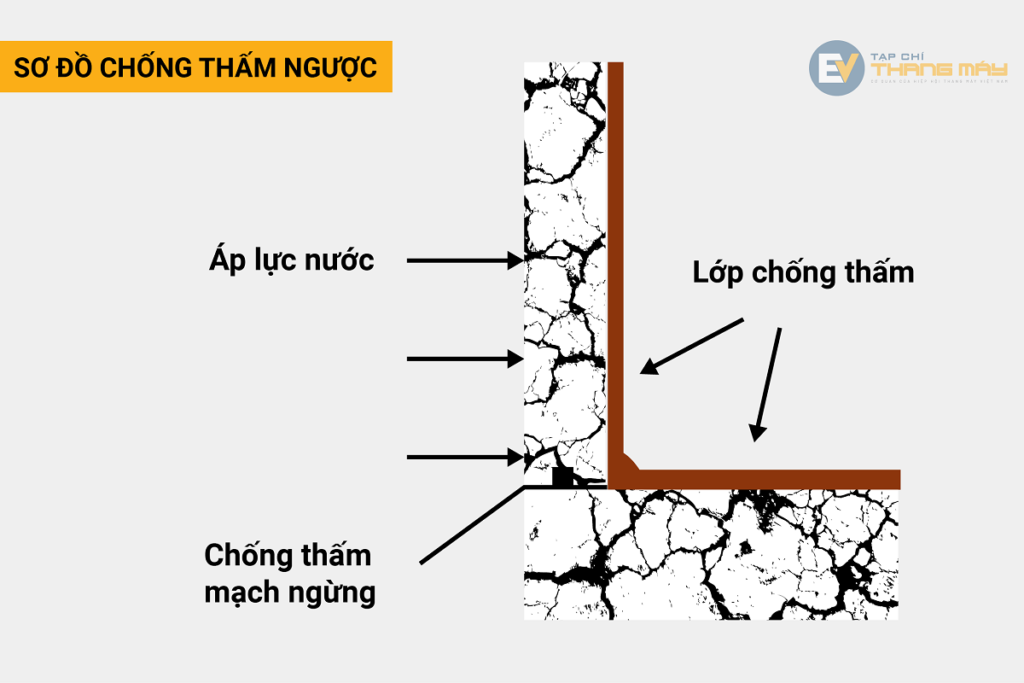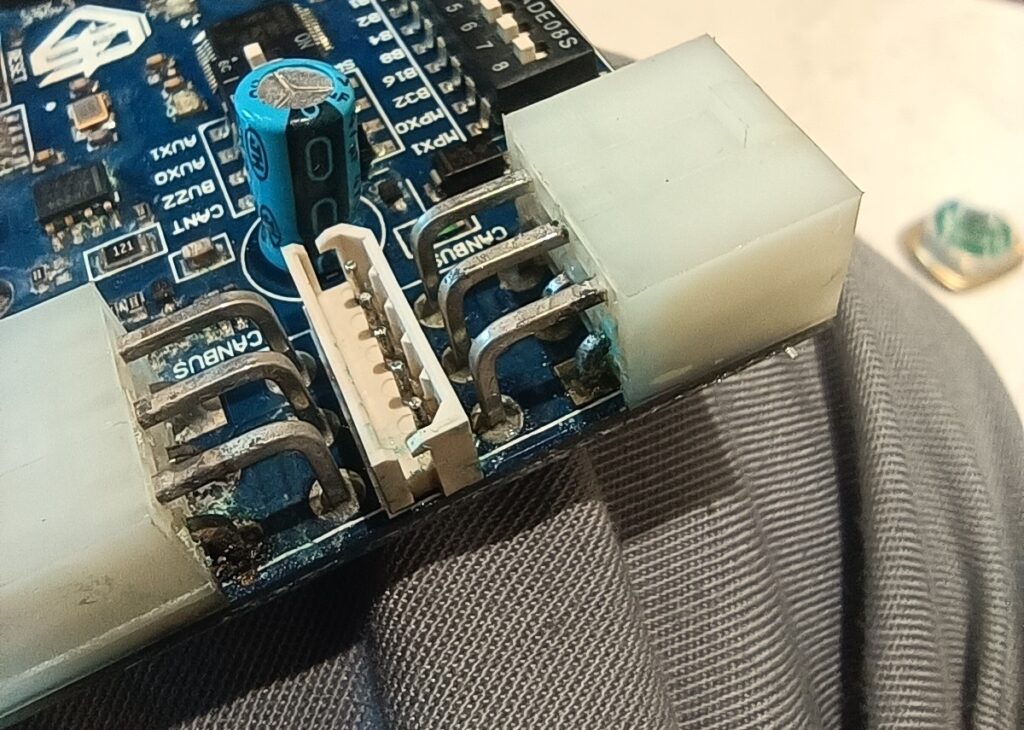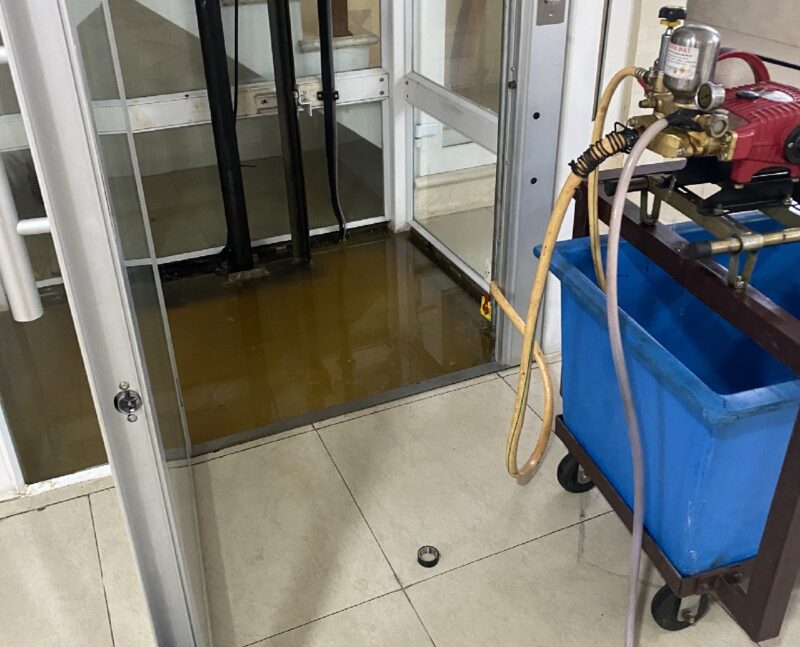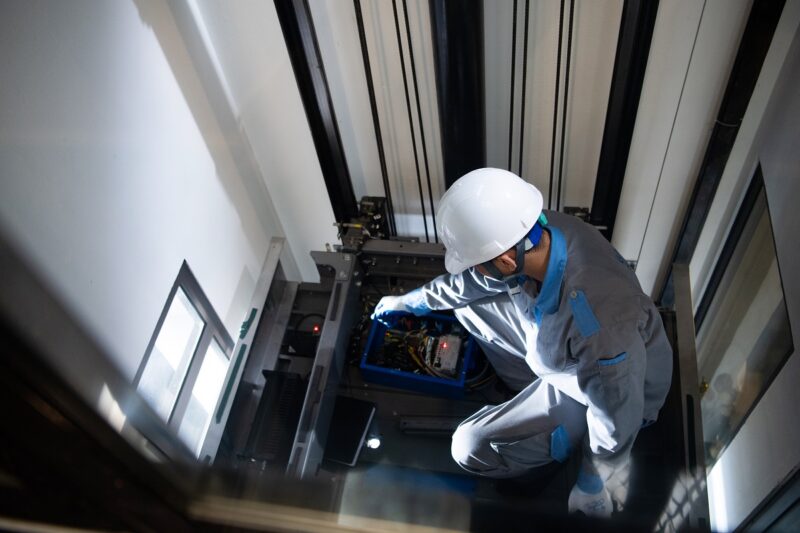EM – Although it has only just entered the rainy season, many elevator maintenance and repair companies say they receive a lot of calls from customers asking for advice on flooded shaft.
Reader: My family just built a house and installed an elevator earlier this year. Due to lack of experience in design, it has been raining heavily so far, causing water to overflow into the elevator. Would this cause damage to my family’s elevator? A reader in Ninh Binh sent a question to the editorial office.
Elevator Magazine: This is probably the question that many readers wonder when the elevator has problems due to flooding. Flooding in the elevator well can cause electrical fires, damage to the transmission system, or wear and tear of components and equipment. Elevator Magazine will provide readers with some tips to minimize the risks to elevators as the rainy season approaches.
In fact, in Vietnam, the tropical monsoon weather causes both the South and the North to have a long rainy season, flooding and frequent flooding. In the opinion of elevator experts, there are often the following causes that easily lead to elevator flooding:
– Weather: In the rainy season, the phenomenon of heavy rain, prolonged rain causing temporary flooding or even flooding for many days is easy to flood the elevator.
– Elevator construction location: Improper installation location, unforeseen flooding incidents, building elevators near toilets, installing water systems near elevators, etc. can all cause elevator flooding problem.
– Ineffective elevator waterproofing: When constructing elevator shafts, the waterproofing problem for the elevator is not effective, which can cause groundwater to affect the pit, causing dripping water, wet pit,…
– Leakage of water from the fire system: There is also a situation where there is an incident related to firefighting that has a water source leaking into the elevator system.
– Cleaning and washing the house: This is also one of the reasons why the elevator shaft is penetrated by water if the user does not pay attention.

The above causes can all cause waterlogging or dampness for the elevator shaft, directly affecting the components and equipment of the elevator. An elevator is a device with an electrical system, the transmission system needs a dry environment to avoid fire and damage. In addition, the components and equipment of the elevator are mostly metal materials, which are easily corroded and damaged in humid and waterlogged environments.

Safety protection for elevators when there is a risk of flooding
– Equipped with flood warning system: Currently, there are modern technologies such as FDS (Flood Detection System). The principle of operation of these systems is that when there is a leak of water or a customer forgets to close the water valve, causing water to overflow into the elevator, the system will alert the customer by text message to the phone, and automatically take the cabin from a lower floor to a higher floor to avoid flooding, causing electric shock, electric leakage.
– Bring the elevator cabin to a high floor: If there is no automatic warning system, users should also take the elevator cabin to a high floor right before the water has flooded the shaft. Users should take the elevator to the highest floor or at least to the 2nd floor or higher, helping the cabin get as high as possible off the ground to avoid being flooded or damp due to steam.
– Do not use the elevator when the device is flooded: Absolutely do not press the button to call the elevator. Using the elevator during this time is no different from us damaging our own elevator equipment and at the risk of endangering ourselves.
– Turn off the power of the entire elevator: Before disconnecting the power, make sure no one is in the elevator cabin. This is a move to keep equipment safe from short-circuiting, electrical fires when heavy rain, lightning may affect the current or water ingress.
Note: Some elevators are installed with automatic rescue mode (ARD, SRS, …), the elevator cabin will be taken to the lowest floor in the event of a sudden power cut. In this case, when we disconnect the elevator as instructed above, the elevator will automatically use backup power from the UPS (Uninterruptible Power Supply) to bring the elevator to the lowest floor. Therefore, in addition to disconnecting the elevator, it is necessary to disconnect the backup power source (turn off the rescue circuit breaker) to avoid the situation of “elevator submerged in water” even though the protection plan has been implemented as directed.
– Perform water extraction from the elevator cabin: Avoid leaving the elevator submerged for too long. If necessary, ask for the support of the elevator maintenance and repair unit to have the most timely and accurate handling.

– Check the status of the elevator: After the water recedes, it is necessary to call the elevator technician to check the entire elevator before returning the elevator to normal operation.

When there is a phenomenon of water flooding the elevator, the elevator user/manager should contact the elevator maintenance and repair technical department to handle and check before re-operating the elevator. According to an expert from Vietnam Institute of Lift Engineering Application, thehandling process of the technical department will include the following steps:
Step 1: Check the power source and the operations guided by the user (disconnect the power supply, raise the cabin, cover, …). If the user has not done so, do it immediately.
Step 2: Check the cause, location of water infiltration, status of the well (flooded, wet, dry, …).
Step 3: Treat the cause of water infiltration and leakage; Treatment of standing and waterlogged water in shaft.
Step 4: Check the components (wipe, dry, dry naturally, …).
Step 5: Measure and check components before turning back on to operate (cold test).
Step 6: Check operation after power on again.
When fully implementing the above steps, the elevator will minimize the risks in the rainy season, save a lot of costs for repairing and replacing equipment damaged and worn out by water./.
Minh Duong



